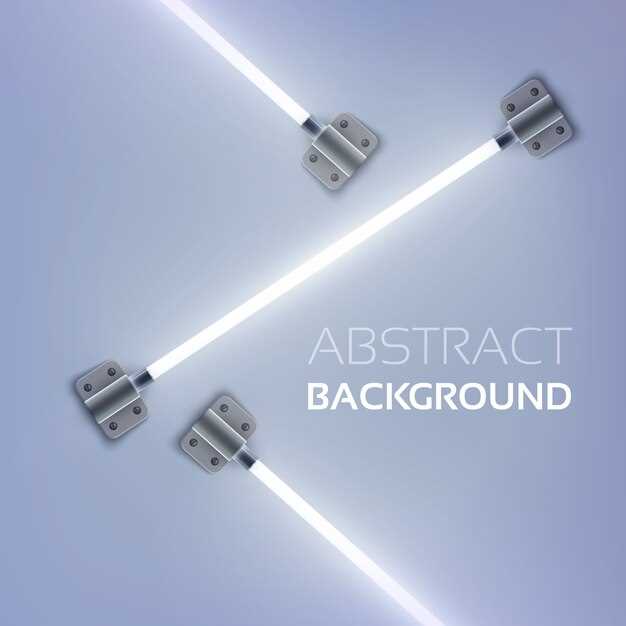
In today’s automotive world, enhancing visibility and adding a touch of style to your vehicle has never been easier. LED light bars have emerged as a popular accessory for off-road enthusiasts and everyday drivers alike. They provide not only improved illumination for night driving but also add a modern look to any vehicle. This guide aims to equip you with essential information and step-by-step instructions to successfully install LED light bars on your vehicle.
Before diving into the installation process, it’s crucial to understand the different types of LED light bars available on the market. From slim and compact designs to larger, more powerful options, each type serves various purposes. Whether you’re looking for increased visibility during nighttime off-roading or simply want to enhance your vehicle’s aesthetic appeal, choosing the right LED light bar is the first step toward achieving your goal.
Once you have selected the appropriate light bar, preparation becomes key. Familiarizing yourself with the necessary tools and safety precautions ensures a smooth installation process. This guide will take you through each stage, from planning the placement of your light bar to wiring it correctly, ensuring that you can illuminate your surroundings safely and effectively. Let’s get started on lighting up your path!
Choosing the Right LED Light Bar for Your Vehicle Model

When selecting an LED light bar for your vehicle, it is essential to consider several factors to ensure compatibility and maximum performance. First, assess your vehicle type–whether it is an SUV, truck, or car–as this will influence the size and mounting options of the light bar you choose.
Next, evaluate the wattage and lumen output of the light bar. Higher wattage generally means brighter light; however, you should match the output to your specific needs, such as off-road driving or highway use. A light bar with a lumen output between 2000 to 5000 lumens is typically sufficient for most applications.
Consider the length of the light bar as well. Common sizes range from 10 to 50 inches. Ensure it fits well on your vehicle without obstructing airflow or other essential components. Additionally, think about the beam pattern; spot beams are great for long-range visibility, while flood beams illuminate a wider area closer to the vehicle.
It’s crucial to check the mounting brackets and hardware included with the light bar. Ensure they are compatible with your vehicle’s mounting points for a secure installation. If your vehicle has specific aesthetic features, opt for a design that complements its look.
Finally, review the light bar’s construction material and ingress protection rating (IP rating). Durable materials like aluminum with an IP67 or IP68 rating provide better weather resistance, ensuring longevity in harsh conditions. By considering these factors, you can select an LED light bar that meets your vehicle’s requirements and enhances your driving experience.
Step-by-Step Process for Mounting and Wiring the Light Bar

To effectively mount and wire your LED light bar, it’s essential to follow a systematic approach. Begin by gathering the necessary tools and materials, which include the light bar, mounting brackets, screws, a wiring harness, a switch, and basic hand tools such as a wrench, screwdriver, and wire stripper.
Start with the mounting process. First, select an appropriate location for the light bar on your vehicle. Common positions include above the windshield, on the front bumper, or on a roof rack. Ensure the chosen spot allows for maximum visibility while being securely mounted without obstructing the driver’s view.
Once you have determined the location, assemble the mounting brackets according to the manufacturer’s instructions. Use the bracket to mark the drilling points on your vehicle, ensuring they are level and evenly spaced. With the markings in place, drill the necessary holes, making sure to take proper precautions to avoid damaging any vehicle components.
Next, attach the mounting brackets to your vehicle using screws. Ensure they are tightly secured and check for stability. After the brackets are firmly in place, carefully attach the LED light bar to the mounted brackets and secure it using any provided hardware.
With the light bar mounted, it’s time to wire it. Start by routing the wiring harness from the light bar to the vehicle’s interior, making sure to avoid any sharp edges that could damage the wires. It’s advisable to run the wires through existing grommets or engine compartments for a cleaner look.
Once the harness reaches the interior, connect the positive and negative wires to the battery. The positive wire usually connects to the battery’s positive terminal, while the negative wire should be attached to a ground point on the vehicle. Ensure all connections are secure and insulated to prevent short circuits.
Next, connect the wiring harness to the switch that will control the light bar. Install the switch at a convenient location inside your vehicle, ensuring it is easily accessible but not positioned in a way that could distract the driver. Connect the switch to the positive wire from the harness.
Before finalizing the installation, double-check all connections and ensure the wiring is clear of any moving parts or heat sources. Once everything is securely connected, test the light bar by turning it on with the switch. If it operates correctly, neatly secure any excess wiring with zip ties or clips to keep it organized.
Finally, recheck all bolts and screws and clean up the work area. Your LED light bar installation is now complete, enhancing your vehicle’s visibility and off-road capabilities.
Testing and Adjusting Your LED Light Bar for Optimal Performance
Once you have successfully installed your LED light bar, the next crucial step is testing and adjusting it for optimal performance. Proper alignment and functionality can significantly enhance your visibility while driving at night or in low-light conditions.
Begin by selecting a safe location for testing. This should be an open area with minimal ambient light, allowing you to see the light output clearly. Start your vehicle and turn on the LED light bar. Observe the brightness and coverage area. Check for any flickering or uneven lighting, which may indicate an installation issue.
To ensure the light bar is properly positioned, park your vehicle on a flat surface approximately 25 feet away from a vertical wall or another vehicle. Turn on the light bar and see how the beam projects onto the surface. Ideally, the beam should be centered and project a clear, defined pattern. If the light is too high or too low, adjustments to the mounting brackets or angles may be necessary.
Fine-tuning the angle of the light bar is essential. A good starting point is to have the light aimed slightly downward, so that it illuminates the road ahead without blinding oncoming drivers. The ideal position is about 1-2 inches below the horizontal line when the vehicle is at rest. Use a measuring tool to ensure accurate placement.
After making adjustments, conduct another test drive to validate the effectiveness of the changes. Pay attention to the light distribution in various driving scenarios, such as turns, hills, and curves. A well-adjusted light bar should provide ample illumination without creating hotspots or shadows.
Finally, check the light bar’s stability and integration with your vehicle’s electrical system. Ensure all connections are secure and weatherproof. Regular maintenance checks will help to keep the light bar functioning optimally over time.

